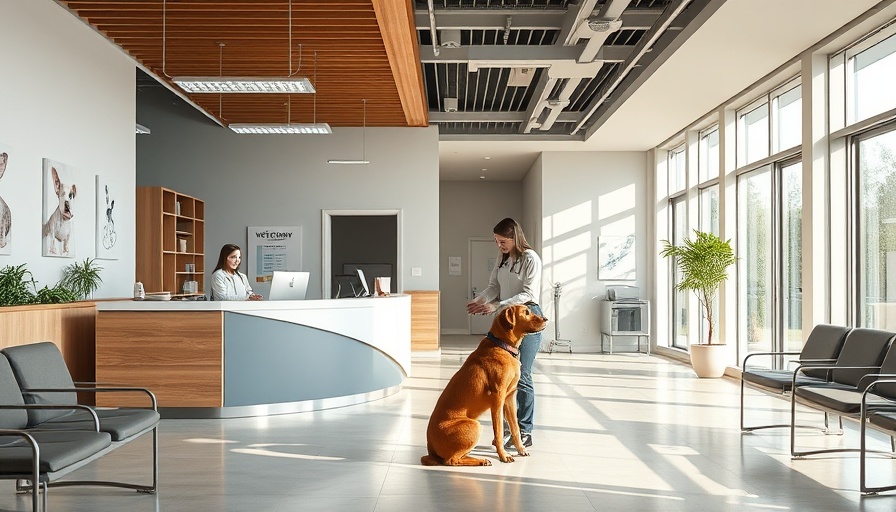
Transforming Your Waiting Room: Why It Matters
In the competitive world of veterinary practice, the first impression often begins the moment a pet owner walks into your clinic. A welcoming waiting room not only sets the tone for the visit but can also improve client satisfaction and boost repeat business. By cultivating a space that resonates warmth and health, veterinary clinics can increase their attractiveness to potential clients.
Understanding the Psychology of Waiting
According to studies, the ambiance of a waiting room significantly influences clients' perceptions. A well-designed waiting area can reduce anxiety for both pets and their owners. This can be achieved through soft lighting, engaging decor, and comfortable seating. Incorporating calming visuals such as images of happy pets can create a positive atmosphere that enhances the overall experience.
Five Tips for Creating an Inviting Space
1. Adjust the Layout - Arrange seating in clusters rather than rows to foster a more intimate atmosphere. This encourages social interaction among pet owners, contributing to a sense of community. 2. Add Comfort Items - Consider providing pet-friendly treats and water stations. Not only does this make pets feel welcomed, but it also adds a layer of comfort for their owners. 3. Engage the Senses - The use of scents can enhance the waiting experience. Mild, pleasant fragrances can create a soothing environment, while plants can also improve air quality and add a touch of nature. 4. Provide Succinct Reading Material - Include a variety of veterinary-specific magazines, pamphlets, or educational materials in your waiting area. This engages clients and keeps them occupied during wait times. 5. Utilize Technology - Implement systems for check-in that allow clients to be notified of their appointment status from their seats; a video display showcasing hospital achievements or pet care tips can also engage visitors effectively.
Real-World Examples of Success
Implementing changes to the waiting room can lead to tangible benefits. For example, a veterinary clinic in Seattle recently revamped their waiting area, introducing soft seats and calming colors. As a result, the feedback was overwhelmingly positive, with many clients reporting less anxiety during visits. This transformation not only improved client experience but led to an increase in new clients by nearly 20% in just three months.
The Bigger Picture: Community and Connection
A vet clinic’s waiting area serves as more than just a place to wait; it symbolizes a community hub. A well-designed waiting space can strengthen community ties, encourage social interaction, and promote a sense of belonging among pet owners. This connection often translates into loyalty and advocacy for the clinic.
Looking Ahead: Future Trends in Veterinary Practice Spaces
As veterinary practices continue to evolve, waiting rooms will increasingly reflect trends in customer service and design. Future clinics may incorporate technology that tailors the waiting experience to individual clients, providing updates through apps or personal devices. Furthermore, a heightened focus on sustainability could lead to greener design options and eco-friendly materials being used in renovations.
Ultimately, the goal is to create an environment that fosters positivity and comfort, ensuring that your veterinary clinic stands out not just for its service but for its dedication to the well-being of its clients and their pets.
 Add Row
Add Row  Add
Add 




Write A Comment